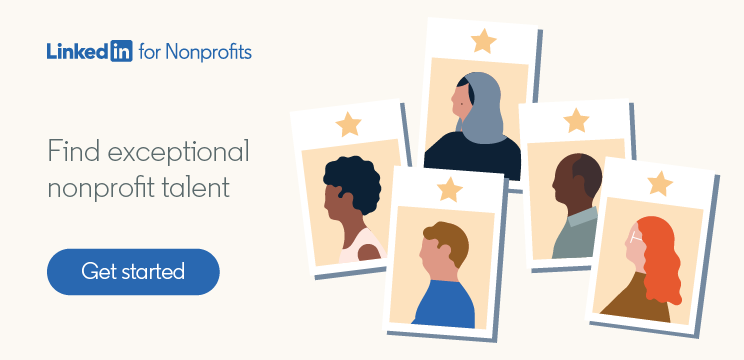
How to support an LGBTQIA+ workforce at your nonprofit year-round
The nonprofit workforce is as diverse as ever — and in order for organizations to continue fostering truly inclusive spaces, they must advocate for policies and work environments that protect, support, and elevate LGBTQIA+ workers.
Despite the immense, transformative progress that has been made over the last few decades, there are still steps that organizations have to take in solidarity with their LGBTQIA+ employees. Being vocal allies in the larger nonprofit space is undoubtedly helpful and has the power to spark long term change across the sector. However, demonstrating allyship within the organization is just as necessary and important, as LGBTQIA+ employees still experience disproportionate amounts of harassment and discrimination. LGBTQIA+ allyship is more than just a public declaration — it is a constant reflection of a nonprofit’s core values and an active participation in the fight for human rights.
Here are just a few of our insights on how nonprofits can support their LGBTQIA+ workforce all year round.
1. Enforce strict anti-discrimination and anti-harrassment policies.
According to a survey conducted in May 2021, 45.5% of LGBTQIA+ employees report being treated unfairly due to their sexual orientation or gender identity. From microaggressions — subtle, but equally harmful actions that target another individual — to blatant mistreatment, discrimination occurs on all levels, and far too frequently.
Nonprofit organizations must have policies and systems in place that aim to protect their employees from such behavior. Anti-discrimination laws establish a helpful baseline for where to begin, but it’s important that nonprofits go the extra mile and provide further support where it’s needed. Whether it’s through gender-affirming healthcare, extended family and partner benefits, or educational workshops, there are multiple ways to ensure that LGBTQIA+ employees are fully cared for.
No one deserves to be discriminated against for their identity — and LGBTQIA+ nonprofit workers have every right to feel safe while they serve other communities in need.
2. Unlearn harmful biases while implementing equitable hiring processes.
As nonprofits strive to hire with a DEI lens, they must be mindful of any unconscious biases that recruiters may have when recruiting candidates from varying backgrounds. Biases are ways for our brains to categorize information about people, but they can easily become discriminatory when recruiters make underlying assumptions about others based off of their race, gender, or sexual orientation. It’s crucial for those involved in the hiring process to actively call out and unlearn harmful stereotypes, especially as they strive to include LGBTQIA+ workers into their DEI efforts.
Nonprofits must also spotlight more LGBTQIA+ voices within the organization, but they cannot do so until they can guarantee that other leaders and coworkers are unanimously attentive, intentional, and willing to support their colleagues. With a greater range of perspectives, organizations will be able to witness the positive impact that diversity has on their overall work culture.
3. Create spaces where employees can safely express themselves.
A BCG employee survey shows that 40% of LGBTQIA+ employees are not open about their identities in a work setting. And for those who are, 54% of them still choose to stay closeted when interacting with company clients. On the other hand, the same survey demonstrates that nearly half of openly LGBTQIA+ employees not only feel safer, but are more empowered and creative when they are able to present themselves authentically.
In order for nonprofits to ensure safe work environments for LGBTQIA+ employees, there must be an adequate amount of educational training and resource groups made available. There must also be room for important, sometimes even difficult conversations so that leaders and employees can grow alongside one another in their pursuit of genuine allyship. It makes a world of difference for LGBTQIA+ nonprofit employees to have access to transparent, affirming spaces—but it’ll take a collective effort to create them.
The need for allyship
Allyship takes on many forms, ultimately aiming to give agency and voice back to a marginalized group. When it comes to standing in solidarity with the LGBTQIA+ nonprofit workforce, organizations must commit to several practices: enabling a diverse and equitable hiring process, providing an ample number of growth opportunities, and voicing public support for LGBTQIA+ workers’ rights.
Being an LGBTQIA+ inclusive nonprofit is essential for a healthy workplace. When people are accepted and celebrated for who they are, they’ll join the collective effort to create a more just and equitable future for all.
This post was inspired by Leonna Spilman’s article, “What You Can Do To Support LGBTQ+ Employees Year Round”
Take your nonprofit to the next level and develop your team, your organization, and your own skills with these LinkedIn’s free nonprofit resources.

